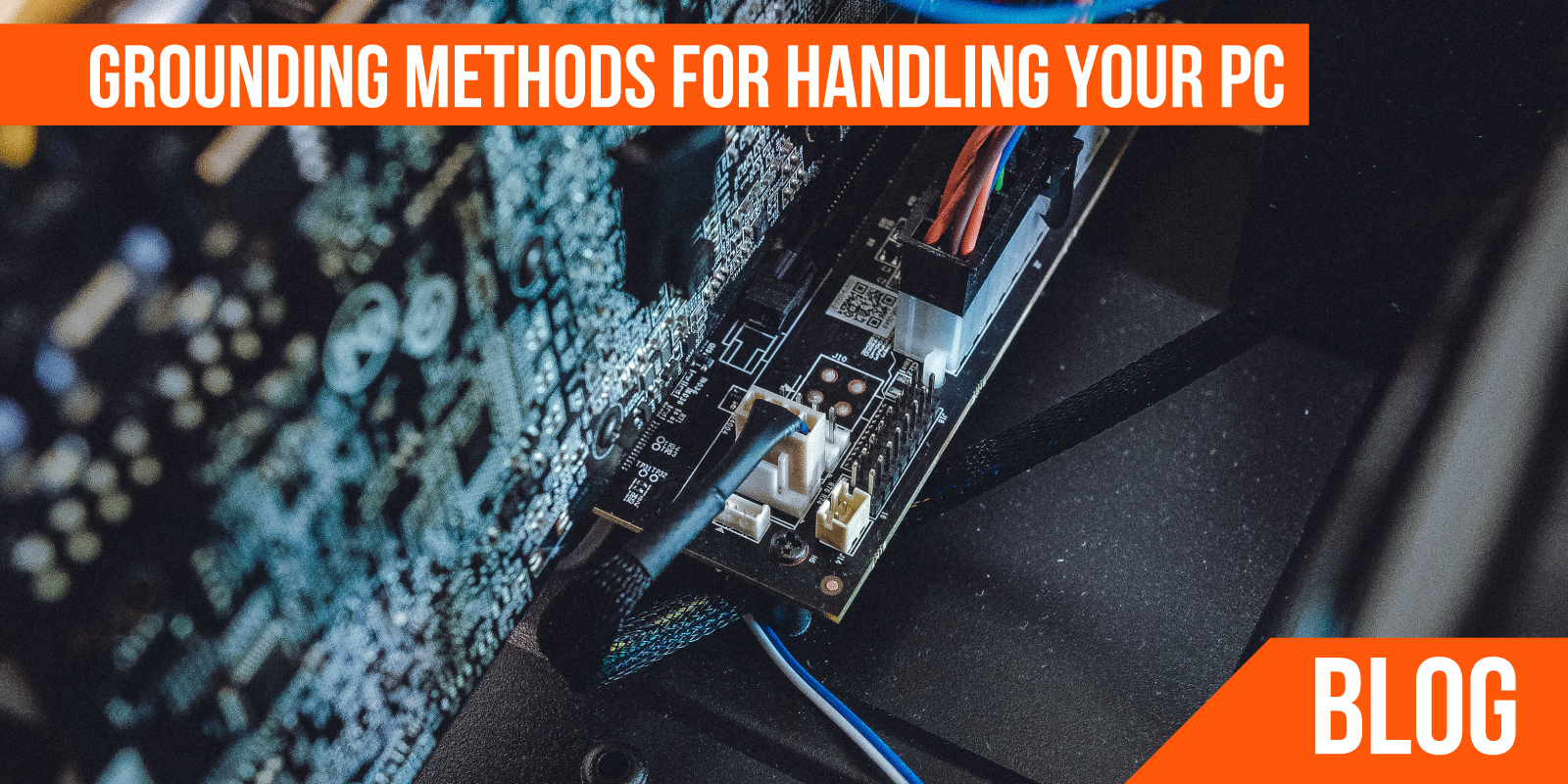Grounding Methods for Handling Your PC
This form is protected by reCAPTCHA - the Google Privacy Policy and Terms of Service apply.
Don't have an account?
Creating an account has many benefits: check out faster, keep more than one address, track orders and more.
Grounding Methods for Handling Your PC:
While the likelihood of you harming your PC with static electricity is low, there are some necessary precautions you should take to avoid damaging your computer’s more delicate internal parts (like the CPU) from electrostatic discharge. This blog is a quick, step-by-step guide on the few things you can do to ground yourself before handling your PC and ensure you don’t accidentally short out a vital component.
Preparing Your Work Surface:
1. Work on a hard surface:
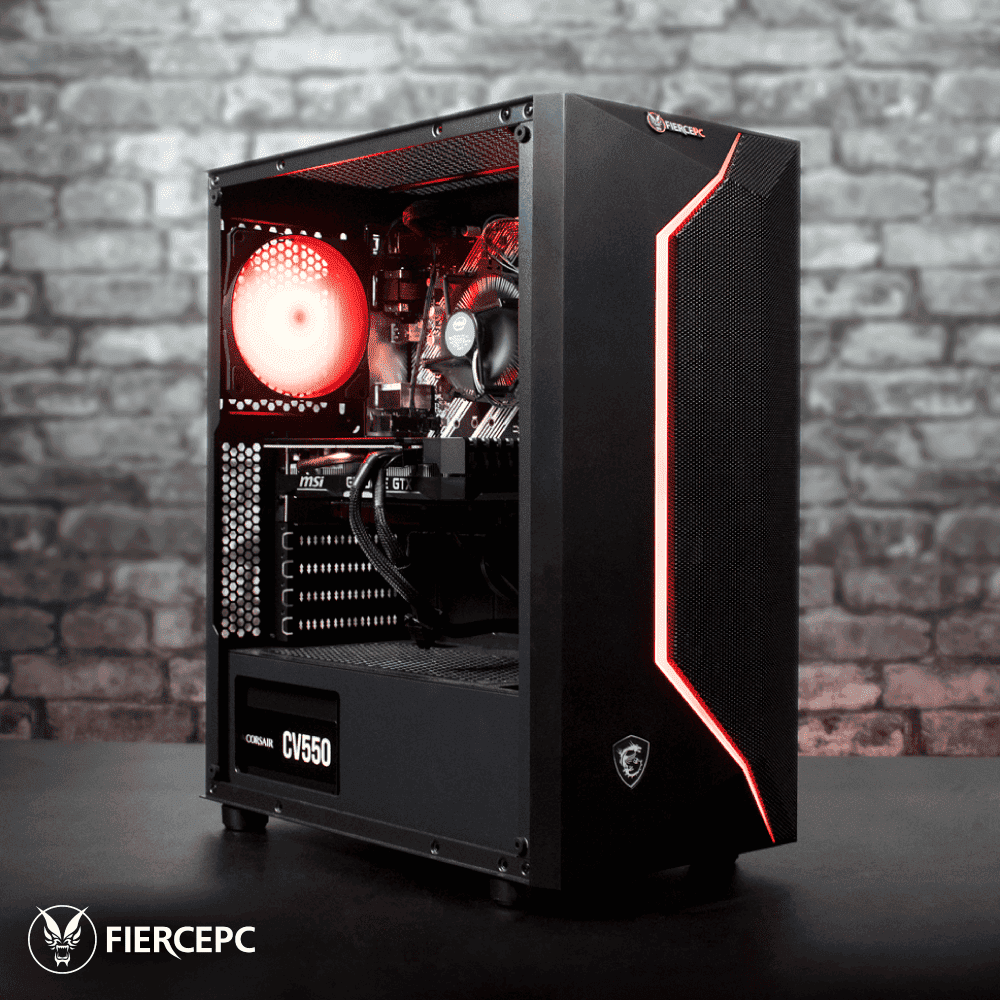
You should assemble, or take apart computers on a clean, hard working surface to minimise the likelihood of static build-up. A table, floor or countertop will work fine for this. Your PC should never be placed on materials such as carpet, blankets, or towels when handling your PC in situations where you need to handle the internal components.
2. Stand on a hard floor in bare feet:
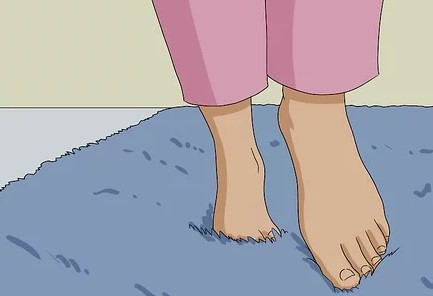 Not only can carpet and other materials give you a charge, but so can socks. Ensure you are standing barefoot on wood, tile or other hard flooring instead. Alternatively, you can wear shoes with rubber soles to completely block your connection to the floor. Any shoe with rubber soles should be enough to block your connection with the floor. If you do not have the option of not standing on a carpet, you’ll need to be proactive about grounding yourself every few minutes.
Not only can carpet and other materials give you a charge, but so can socks. Ensure you are standing barefoot on wood, tile or other hard flooring instead. Alternatively, you can wear shoes with rubber soles to completely block your connection to the floor. Any shoe with rubber soles should be enough to block your connection with the floor. If you do not have the option of not standing on a carpet, you’ll need to be proactive about grounding yourself every few minutes.
3. Take off all static-friendly clothing:
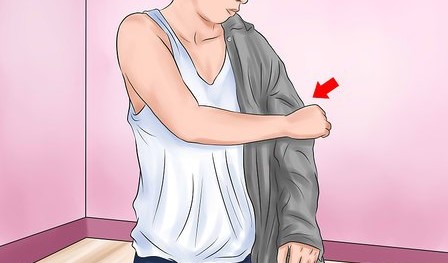
Some synthetic fabrics and wool are good at gathering static, so ensure you have removed these if possible, and wear cotton clothing where possible.
If you can, wash and dry your clothes using a dryer sheet to minimise static build-up before working on or handling your PC.
4. Humidify in dry weather:
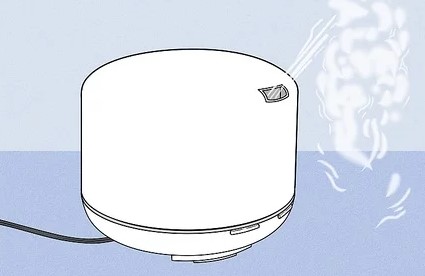 Electrostatic discharge is a bigger problem in dry environments. With this in mind, you could use a humidifier if you happen to have one. If you don't, there isn’t much need to buy one just for handling your PC. The other precautions we have listed should be more than enough on their own.
Electrostatic discharge is a bigger problem in dry environments. With this in mind, you could use a humidifier if you happen to have one. If you don't, there isn’t much need to buy one just for handling your PC. The other precautions we have listed should be more than enough on their own.
5. Keep all components in antistatic bags:
All new PC components should stay in the antistatic bags they were sold in until ready for installation. Do not remove them from the antistatic bags until you are ready to use them.
Grounding Yourself:
1. Understand how grounding works:
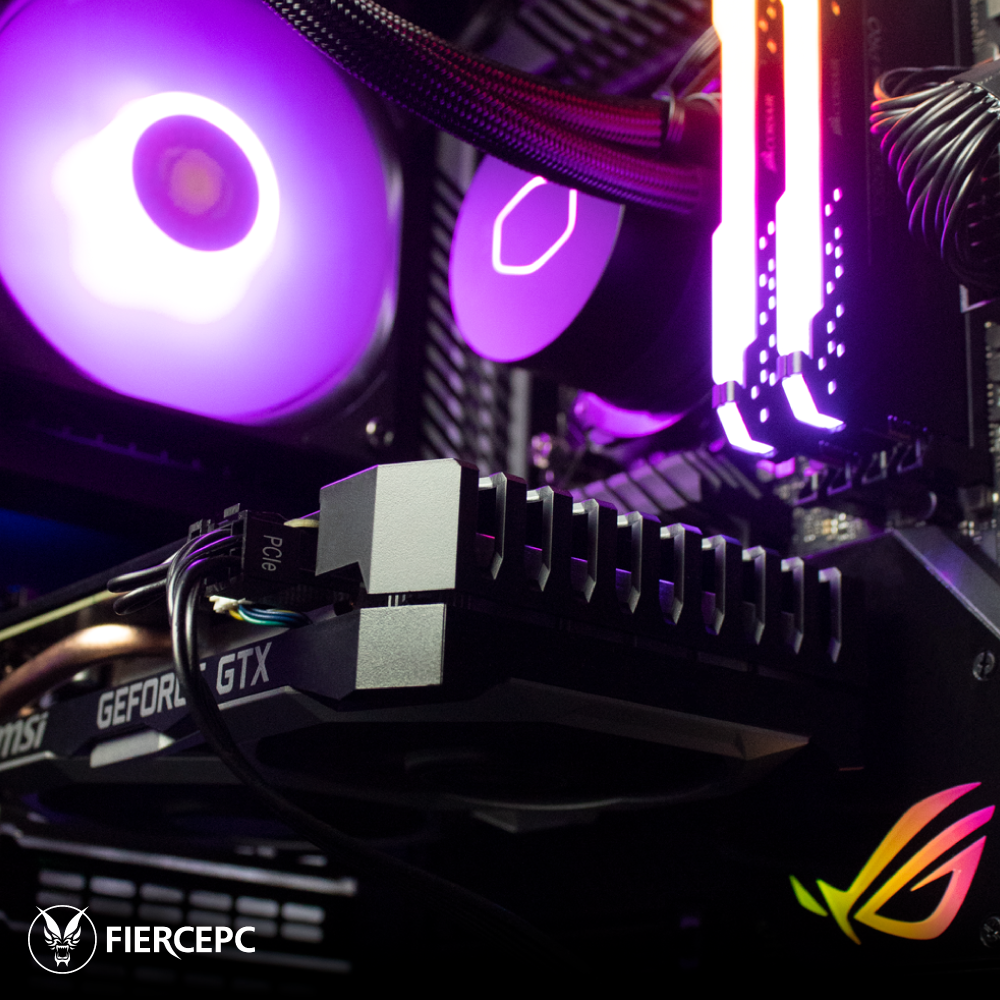
In order to prevent built-up static from transferring from you to a sensitive computer component, you'll need to discharge the static into something more durable. In most cases, this is a metal item that is either touching the floor or touching a series of items leading to the floor.
2. Use your computer's case to ground yourself:
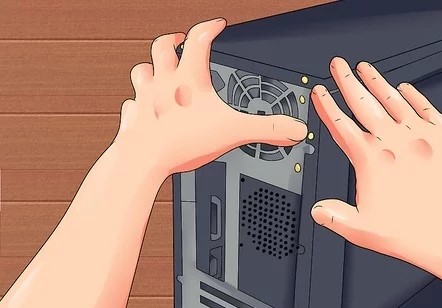 The majority of builders use this technique: before touching or installing something that can be harmed by ESD (e.g., the motherboard), place your hand on an unpainted metal piece of the computer's case.
The majority of builders use this technique: before touching or installing something that can be harmed by ESD (e.g., the motherboard), place your hand on an unpainted metal piece of the computer's case.
You can even lay your non-dominant arm on the metal part of the case while installing the component if you want to be absolutely positive that ESD won't harm it.
3. Touch grounded metal objects every couple of minutes:
This must be unpainted metal with a clear ground path, such as a metal radiator or the bay shielding on your computer's case. This is the quick and easy option, and many people build computers without taking any other precautions.
There's a small but definite risk that this will not be enough. Rely on this only if your project is quick and the components are not valuable.
4. Ground yourself with an anti-static wristband:
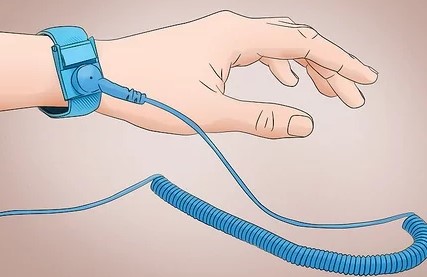 These cheap items are sold at electronics stores and in online markets. Wear the wristband tight against your skin, and clip the dangling end onto a grounded, unpainted metal object such as a screw.
These cheap items are sold at electronics stores and in online markets. Wear the wristband tight against your skin, and clip the dangling end onto a grounded, unpainted metal object such as a screw.
Do not use a wireless wristband, as these do not work.
If you get a wristband with a loop (rather than a clip), it's easy to slip it over the centre screw on a wall outlet plate. This is supposed to be grounded (at least in US code), but you may want to double-check with a multimeter.
5. Connect yourself to a grounded metal object via a wire:
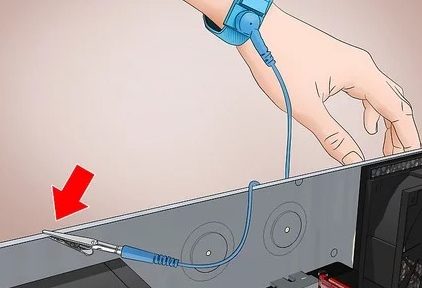 A common technique for keeping oneself grounded is tying a conductive wire, such as copper, around one's toe or wrist and then tying the other end around a grounded, unpainted metal object. This is ideal if you have the materials on-hand and don't have a way to work on a hard surface.
A common technique for keeping oneself grounded is tying a conductive wire, such as copper, around one's toe or wrist and then tying the other end around a grounded, unpainted metal object. This is ideal if you have the materials on-hand and don't have a way to work on a hard surface.
6. Work on an ESD mat:
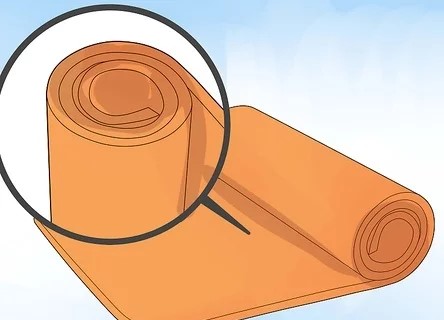 Buy an ESD mat rated for "conductive" or "dissipative", then place the computer parts on the ESD mat and touch the mat as you work. Some models will have a place to clip your wristband onto as well.
Buy an ESD mat rated for "conductive" or "dissipative", then place the computer parts on the ESD mat and touch the mat as you work. Some models will have a place to clip your wristband onto as well.
Go with a vinyl ESD mat for computer repair; rubber is more expensive and not necessary for this purpose.
Unless you value your peace of mind highly, this is above and beyond for most home projects.
